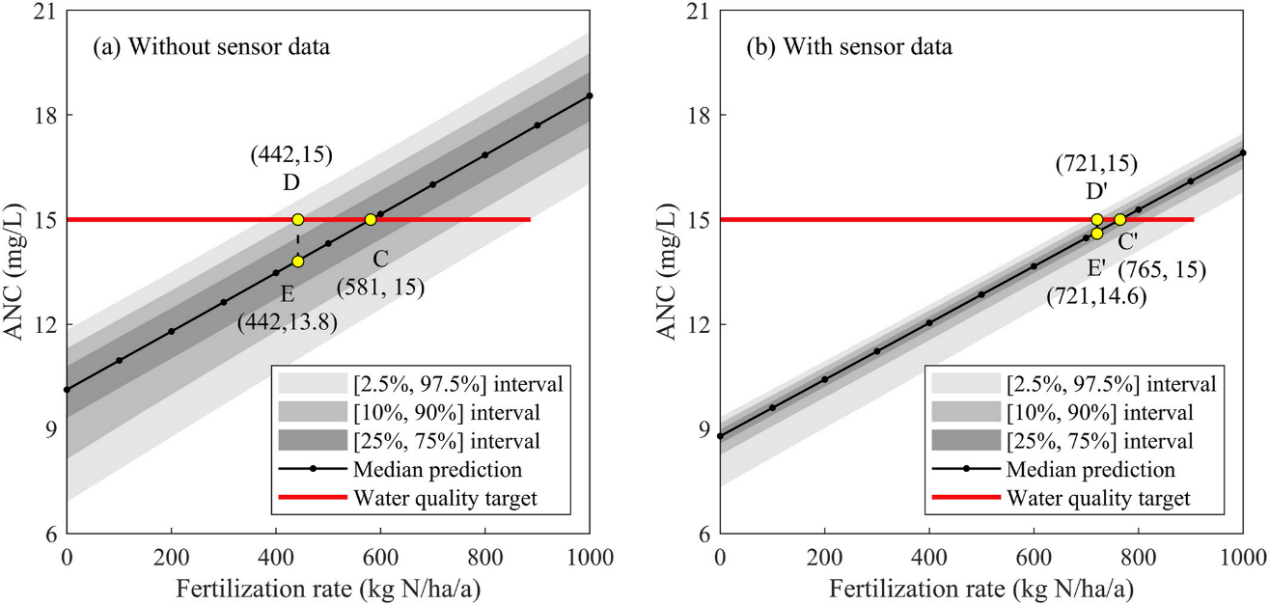Addressing environmental Internet of Things for water quality monitoring and prediction
Online sensors are the acutest “sensory organ” of the environmental Internet of Things (IoT), providing high-frequency and near real-time data for environmental monitoring and management. In watershed water quality management, online sensors have significant advantages over traditional manual sampling and laboratory analysis in terms of cost and timeliness.
However, sensors installed in natural water bodies are prone to interference from biological contamination, background ions, and other factors, making them difficult to maintain and calibrate. Data errors are usually significant. How to fully and effectively utilize online sensor data in water quality monitoring, early warning, and management has become a technical bottleneck in practical work.

Professor Yi Zheng’s research team from the School of Environmental Science and Engineering (ESE) at the Southern University of Science and Technology (SUSTech) has recently confronted the technical bottleneck environmental IoT faces in water quality management applications.
Their research work, entitled “Assimilating Low-Cost High-Frequency Sensor Data in Watershed Water Quality Modeling: A Bayesian Approach,” has been published in Water Resources Research, a top water science journal.
To address this bottleneck, the research team developed a multi-source data assimilation method based on rigorous Bayesian analysis (named BCMSO), using watershed water quality models as a platform to fuse conventional monitoring data (low frequency, high cost, low error) and online sensor data (high frequency, low cost, high error), significantly improving the monitoring and forecasting capabilities of river water quality.
Through rigorous mathematical derivation, the study theoretically validated BCMSO. It revealed through numerical experiments that BCMSO can effectively eliminate the distracting impact of sensor data errors on water quality forecasting and significantly reduce the uncertainty of water quality predictions. The BCMSO method was further applied to a real-world case study of nitrate pollution management in the Fengpu Creek watershed. This watershed is located in Zhangzhou City, Fujian Province, China (Figure 1), and is an important region for honey pomelo production, facing significant non-point source pollution from agricultural nitrogen.

Figure 1. The Fengpu Creek watershed
The collaborating partner from Xiamen University has conducted long-term observation and research in the Fengpu Creek watershed. They have installed online sensors at the outlet of the watershed to obtain high-frequency (every 20 minutes) electronic conductivity (EC) data. There is a significant positive correlation between EC and nitrate concentration, making EC a good proxy for river nitrate concentration.
Using the BCMSO method, the SWAT water quality model assimilates the EC data, resulting in more accurate predictions of nitrate concentration at the watershed outlet and significantly reducing the uncertainty range of the predictions (Figure 2). This reduction in uncertainty enables a significant decrease in the cost of setting the margin of safety (MOS) for nitrogen management in the watershed, from 106 million yuan per year to 34 million yuan per year.

Figure 2. Average nitrate concentrations (ANCs) simulated by the SWAT model in the Fengpu Creek Watershed under different fertilization rates (Figure 8 in the paper)
This research not only addresses an important technical issue in the application of environmental IoT but also demonstrates the immense potential and broad prospects of using big data for environmental management. It holds considerable significance for ongoing efforts in China, such as digital twin watershed construction and smart environmental protection.
Feng Han, Associate Professor of the School of ESE at SUSTech, and Zhaoping Hu, a master’s student at SUSTech, are the first and second authors of this paper, respectively. Prof. Yi Zheng is the corresponding author, and co-authors include Prof. Nengwang Chen from Xiamen University.
The study was supported by the National Natural Science Foundation of China (NSFC) and the Science, Technology and Innovation Commission of Shenzhen Municipality.
Paper link: https://doi.org/10.1029/2022WR033673
